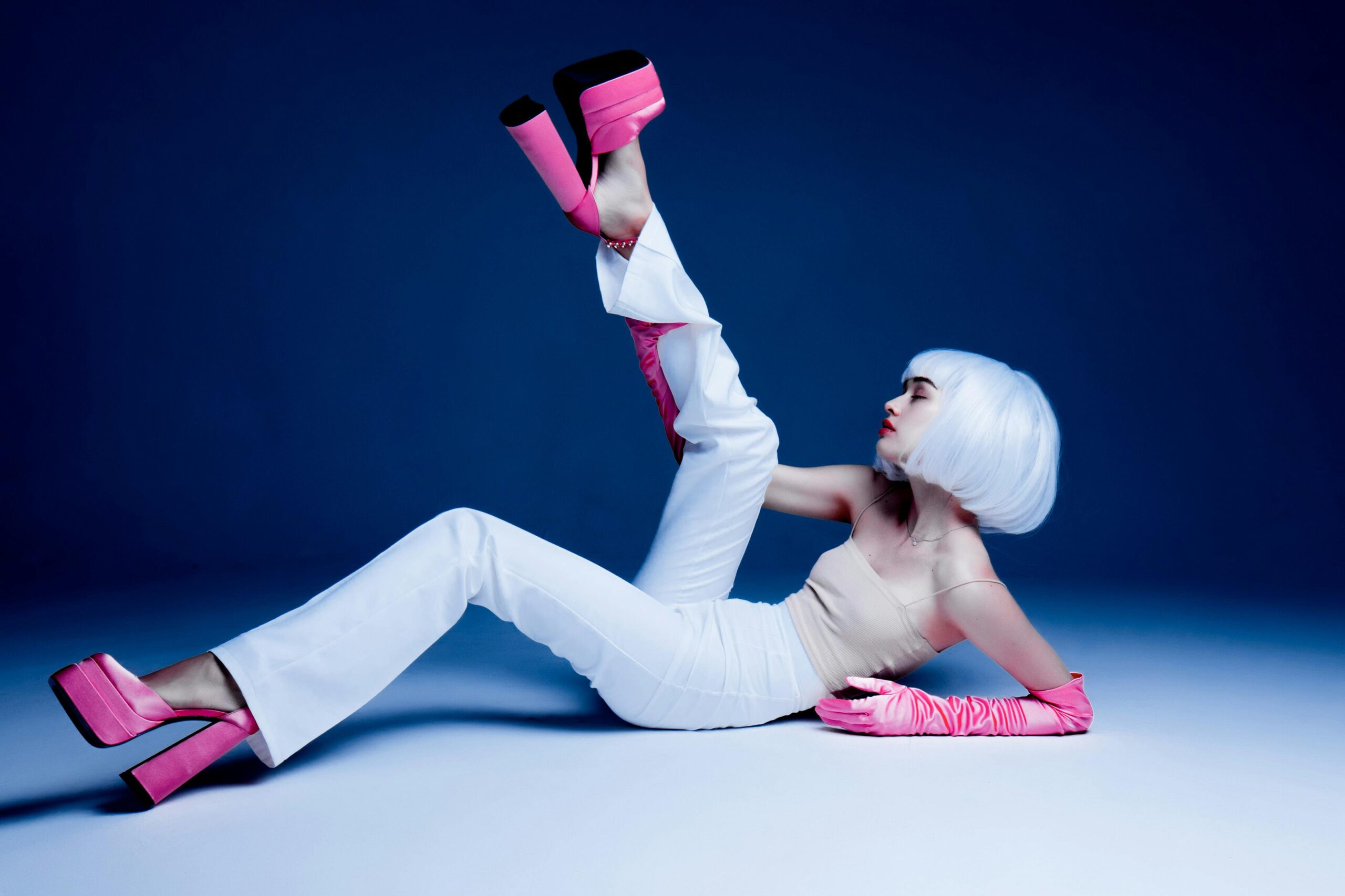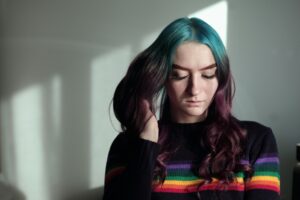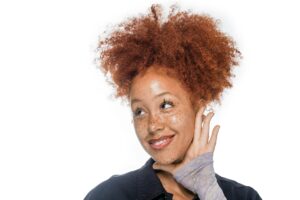John Frieda Foam Hair Color Review

Colors are a lot of fun, especially when it comes to hair. A wild world of shades and tones – an entire spectrum, in fact – is right at your fingertips. There are so many ways to color your hair, permanently or semi-permanently. There’s a wide variety of waxes, creams, shampoos, gels, sprays, and even foams. This is our John Frieda Foam Hair Color review, and for all you pedantics out there — yes yes, I know it’s originally spelled colour.
Is It Safe to Color Your Hair?

Color-treated hair.
“Is it safe to color your hair?” is a tricky question. And a highly subjective one at that. Every single day, millions of people undergo the process of coloring their hair. I’m only assuming not many of them are harmed by it. In that sense, coloring your hair is exceedingly safe. However, if by “safe” you mean that it’s totally and completely 100% harmless, in the short and long term, the answer may be no.
Safe? Overall, it’s a very safe procedure, providing that you use proper ingredients in a safe way. But still, there are many ways to mess up your hair and scalp when coloring your strands. The key is to follow instructions and err on the side of caution. It is quite possible even for those with immense hair dying experience to overlook or outright forget certain things. The reason why such practices might be considered unsafe has to do with the ingredients (more on that later).
Staining is a big issue, even though it’s a side-thing. Lots of times, people will warn you about staining skin, clothes, and surfaces. Be sure to avoid staining by using your product the right way. Pay close attention to your face, ears, and shoulders, and any other locations with which the hair may come into contact.
Some people apply a skin conditioner to the areas that are at risk of being hit with colored hair. By applying a kind of temporary protective barrier between the skin and the outside, you make it easier to manage the dye, and to later remove any color should it end up there.
Safety includes gloves, preparing/mixing the product as specified in the instructions, and proper application of the product, in a way that will not harm your skin, scalp, or hair.
John Frieda Precision Foam Hair Color Line Explained

John Frieda Precision Foam Hair Color Line.
This line was released in 2011 or so. It currently includes 13 different shades of blonde, black, brunette, and red. When it was first introduced, there were more colors – something around 20 altogether.
When John Frieda decided to come out with these salon-grade foam colors, it was a breath of fresh air to many at-home colorists. Not everyone has the money to splurge on expensive color appointments at a professional salon every couple of months. With this line of products, John Frieda was providing a real and viable alternative for those who enjoy colors. And without the steep prices that go along with having it done professionally.
John Frieda Precision Foam Hair Color Ingredients Breakdown
Following the long list of substances that is essentially an extensive chemistry book ingredients list, I’m concerned that the average hair-coloring person won’t know what’s right from wrong. Essentially, what you have here are harsher and softer detergents. There are also hair-layer openers, foam formers, film formers, thickening agents, synthetic dyes, preservatives, softeners and conditioners for the hair and skin, fragrances, and fatty acids. The after-color conditioner also contains rice oil and palm oil. These undoubtedly help to get the hair feeling nice, soft, and manageable.
Not all of these ingredients are terrible, but some definitely need to be considered twice and re-evaluated by the consumer, rather than by the company or the government. Do your research and ask yourself: should you be putting these substances on your scalp and hair regularly? Should you be concerned that some harmful elements could enter your bloodstream? The ingredients will slightly differ depending on the color that you go for, but the basic idea is there: chemicals. I don’t think John Frieda is trying to hide that, and honestly, when it comes to hair dyes, chemicals are kind of hard to avoid. That being said, there is little in these dyes that your hair will thank you for.
Ingredients To Avoid When Coloring Your Hair

Mixing chemicals.
In order to further discuss ingredients, we must understand and internalize this simple truth: in the world of business – and cosmetics are most certainly an ancient business – there is the principle of supply and demand.
Men and women want at-home coloring products that will cover 100% of their imperfections and greys. Furthermore, they expect nothing less than bigger, better, faster, now. They want to be in and out of that bathroom and ready to go in 45 minutes, 60 minutes tops. To that end, hair care product manufacturers went to work, and devised ways through which this could be achieved. To be clear: the presence of potentially-harmful ingredients does not take away one iota from the efficacy of the product itself.
There is a high and (probably) ever-growing demand for instant, flawless, salon-grade, at-home hair coloring kits — so, companies give the people what they want. These kits yield impressive results, mind you, but they often do so at the long-term expense of the consumer. Honestly, though, you can’t blame companies for manufacturing products that people want to buy and use.
Another thing to pay attention to is that countries have separate definitions regarding that which constitutes safety and harm. The differences between Europe, the US, and Asia – for instance – could be significant, depending on the industry. Everything from ingredients to animal testing to marketing and distribution – it all varies a great deal from one place to another.
That said, here are a few ingredients that you may want to avoid when coloring your hair. The thing is, most mainstream hair-color companies will include some of these, or others that are not on this list, in their formula. You can’t be expected to possess the knowledge of a chemistry major – and the cosmetics companies probably count on that. So, here are some ingredients you should probably be familiar with if you’re looking for ingredients to avoid when coloring your hair:
Ammonia
Used to open up the hair’s outer layer in order to let the dye into the inner layers. Ammonia makes it so the color will get deep in there and be more effective for longer. It may cause burns if used improperly, so be careful.
Hydrogen Peroxide
You use this chemical prior to dying the hair most of the time. It strips away natural colors, making the hair a blank canvas for whatever dye is being used. Sounds good in theory, but this chemical actively changes the integrity of the hair and its layers, which can be detrimental.
Para-phenylenediamine (aka PPD)
PPD is a compound which is used as a dark dye, and also as a woodwork preserver. It’s a by-product of the chemical and plastic industries. PPD can be highly toxic when coming into contact with human skin.
Parabens

I recommend avoiding products with parabens.
Parabens are a group of preservatives that have been under closer scrutiny in recent times. Certain companies and industries are becoming more aware of their potentially-harmful nature, but they are still a part of many, many cosmetics products, foodstuff, and other industries.
Resorcinol
Another by-product of coal manufacturing, but interestingly enough it is also found in argan oil (go figure!). With such a substance, it’s all about quantities and exposure. Since hair dyes are substances that are used regularly and repeatedly, sometimes for years, it’s best avoided because it could cause hormonal issues and skin irritation down the line.
Metallic Salts
Copper, silver nitrate, silver, bismuth, or lead are all examples of metallic salts. You can find them being used in multiple industries. When it comes to contact with hair and scalp – and possible entrance to the bloodstream – it is not as friendly as it is in those other fields and factories.
John Frieda Precision Foam Hair Color Review
Okay, we outlined the product’s ingredients, but how does it perform? Really well, actually. Creams, gels, sprays, and shampoos can be messy and drippy, but foam is more put-together in its consistency. It has a different feel to it, but it’s nice overall.
You mix the coloring agent and the developer of the John Frieda Precision Foam Hair Color. Make sure that you tilt instead of shake. The result is a frothy blob of goodness which you can work into your hair with no trouble.
Now, this foam is not a miracle worker. You still need to observe some age-old hair-dying rules, such as:
- Do not level-jump with color. Keep it a shade or two away, but not more
- Don’t keep the foam in longer than you should
- Do rinse thoroughly after using hair dye
- Don’t forget to care for any areas or surfaces you do not wish to stain
You’re going to be pleasantly surprised, unless you have some wild and borderline unrealistic expectations from a drugstore hair-coloring kit. Is it the same as in the salon? Well, it’s certainly a different experience. Also, the grade of products might be different, not to mention the money you’ll be shelling out for the appointment.
The after-color conditioner is very nice. I like it that certain hair-color manufacturers (maybe even most of them?) go the extra mile to ensure color retention.
Conclusion
This line of hair color by John Frieda is effective and inexpensive. If ingredients are a lesser concern to you, then it could very well be the hair color that fits your needs. It’s available online and offline in many places across the country. As I said, there are some salons that use John Frieda products exclusively, and for good reason.
Goes on easily, comes off easily, and because of the foaminess, it manages to appeal to people with very thick hair. Cream or a liquid could be difficult to handle once it’s in your hands or on your scalp, but my experience with the foam has been that it is easier to manage. And this remains true whether it’s still sitting on my open palm or being worked into my roots with my fingers.
It could be that you don’t dig this hair color, and I would understand why. For some, the ingredients are a deterrent, for others, it is the unfamiliarity of the foam itself. Any hair color that works for you, and which you are happy with, is the best one for you right now. Maybe John Frieda foam hair color will be your next purchase, and maybe not.
As far as I am concerned: honestly, I’d love it if they would lose some of those potentially-harmful ingredients, but I don’t know enough about chemistry to make any judgment. As for the results – the product works, and I can tell you that it’s built to last. If you treat your hair properly post-dying (being patient after, and using the right products), the dye will be around longer and have a better hold on your hair.


